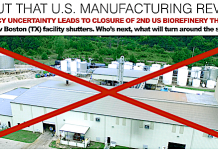Debra Fiakas

Image: Neste Oil Rotterdam Facility. Source: Neste Oil
Finland’s Neste Oil Corporation (NEF: F) brought its fourth renewable diesel plant on-line in September 2011, earning bragging rights to the world’s largest facility of its kind. Located at the Port of Rotterdam, the plant has the capacity to produce 800,000 metric tons of renewable diesel that Neste brands NExBTL and claims is the “cleanest and highest-quality renewable diesel on the market today.” Along with Neste’s three other plants already in operation in Finland and Singapore the fourth plant in Denmark brings Neste’s total production capacity to 2.0 million metric tons per year.
| Start-up Date | Location | Capacity |
| September 2007 | Porvoo, Finland | 200,000 tons/year |
| September 2009 | Porvoo, Finland | 200,000 tons/year |
| November 2010 | Singapore | 800,000 tons/year |
| September 2011 | Rotterdam, Denmark | 800,000 tons/year |
Neste’s augmentation of renewable fuel production capacity is also impressive against the total production capacity in the world. The Renewables 2011 report published by REN21 reported 16.6 million metric tons in total renewable diesel production in 2010. Two of Neste’s plants came on-line subsequent to that production measure period, adding 1.6 million metric tons or ten percent to world production capacity and potentially increasing renewable fuel production by 10% if both its Singapore and Rotterdam plants operate at full capacity.
It is worth noting the location of Neste’s two largest plants – bustling ports with easy access to ocean and rail shipping lines. Leadership at Neste are not small thinkers. They apparently view the renewable energy industry the same way they have viewed the fossil fuel stream – globally. With access to rail and ocean shipping services, they are in a better position to source feedstock and distribute final production – in volume.
Neste positioning itself as a large producer of renewable fuel, begs the question of feedstock supply. Investment in upstream supply seems a logical next step after investment in production capacity. So far upstream supply has remained highly fragmented and localized and investment in the segment is limited to the large agriculture producers such as Archer Daniels Midland (ADM: NYSE) and Tyson Foods (TSN: NSYE).
In my view, investors need to consider upstream supply as an investment opportunity. As new production capacity comes on line, those who control the feedstock supply become more powerful in setting prices or in controlling ownership of production. Darling International (DAR: NYSE) is the largest independent food by-products recycler and presents a unique upstream play. Waste Management (WM: NYSE) is one of the largest handlers of municipal waste. I expect these two new age upstream suppliers to take on more importance as renewable fuel production reaches large scale.
Debra Fiakas is the Managing Director of Crystal Equity Research, an alternative research resource on small capitalization companies in selected industries.
Neither the author of the Small Cap Strategist web log, Crystal Equity Research nor its affiliates have a beneficial interest in the companies mentioned herein. Crystal Equity Research has a buy recommendation on DAR shares. DAR, WM, Neste, and ADM are included in Crystal Equity Research’s Alternative Energy Indices in the Waste-to-Energy, Ethanol and Renewable Diesel Groups of the Beach Boys Index.







